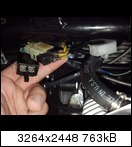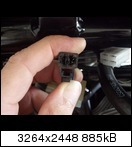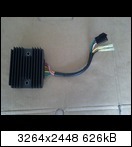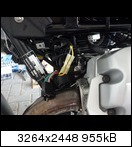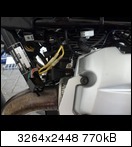der_Thomas
Just got it firing!
Hey there,
my Bellagio was holding a new surprises for me.
There are two yellow wires leading from the generator to the regulator, both positive I think.
The connector between them is not looking very good.
The white housing of the connector seems to be brown inside.
First 5mm from the yellow cables comming out of the connector also aren't yellow anymore but nice brown and the surfaces of the wires feel hard like plastic.
To make it perfect, I can't disconnect the connector anymore.
I guess that the pins inside are nearly molten and I ask myself why.
In the manual guzzi says the generator brings it up to 350W.
That means nearly 30A in a 12V power supply but this shouldn't be a problem for two 2.5mm² cables, should it?
Or am I wrong and the generator gets its minus over one yellow wire and not about the frame?
Then I would understand the problem because 30A for one single 2.5mm² would be a little bit to much.
Does anybody here knows anything about this problem?
Greetings,
Thomas
my Bellagio was holding a new surprises for me.
There are two yellow wires leading from the generator to the regulator, both positive I think.
The connector between them is not looking very good.
The white housing of the connector seems to be brown inside.
First 5mm from the yellow cables comming out of the connector also aren't yellow anymore but nice brown and the surfaces of the wires feel hard like plastic.
To make it perfect, I can't disconnect the connector anymore.
I guess that the pins inside are nearly molten and I ask myself why.
In the manual guzzi says the generator brings it up to 350W.
That means nearly 30A in a 12V power supply but this shouldn't be a problem for two 2.5mm² cables, should it?
Or am I wrong and the generator gets its minus over one yellow wire and not about the frame?
Then I would understand the problem because 30A for one single 2.5mm² would be a little bit to much.
Does anybody here knows anything about this problem?
Greetings,
Thomas

